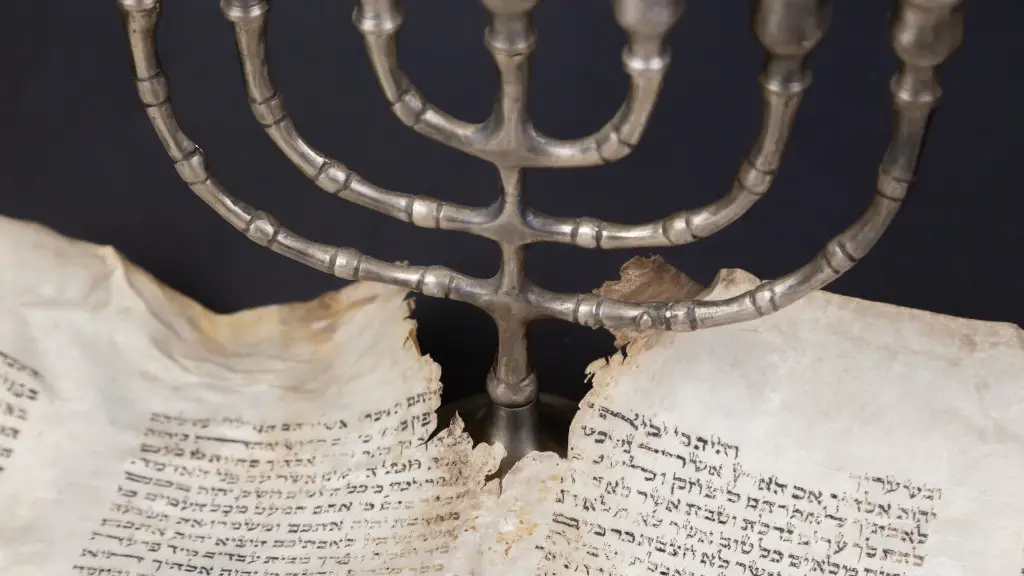Shakti in Hinduism
The Sanskrit word “Shakti” refers to the creative, energy of the Universe, one of the most pervasive and essential elements of Hinduism. Shakti is the cosmic energy that not only creates and maintains the Universe, but empowers the devas and other deities, as well as humans, to do their jobs. Shakti is the manifestation of Divine feminine energy, the essential creative power of the Universe. Many ancient texts, myths, and scriptures contain references to Shakti and her inherent power, and they form the basis of modern Hindu beliefs about Shakti.
In Hinduism, Shakti is personified as the Divine Mother, who is also referred to as “Prakriti” and “Maha Shakti”. She is said to have created the universe, and all its processes, and is responsible for preserving, nurturing, and protecting all life in the universe. She is also the source of all knowledge, power, and wisdom. She is venerated in many forms. Among them are Durga and Kali, who are both seen as manifestations of her divine energy.
From her creative energy springs all the gods and goddesses of Hindu mythology, such as Vishnu, Brahma, and Indira. Furthermore, Shakti is believed to be the source of all spiritual, mental, and physical energy. She is both the maternal and the cosmic energy driving all life and creation. It is believed that without her presence, the cosmos could not exist, and as such, Hindus worship her as the ultimate source of all power and knowledge.
Shakti is an inherent part of all Hindu festivals, rituals and marriages. Hindus believe that by worshipping Shakti, one can attain spiritual liberation and self-realization. Hindus are encouraged to accept Shakti into their lives and to honor her by offering offerings, prayers, and other forms of reverence. In Hindu temples, icons of Shakti are featured prominently, with offerings of ghee, oil, and incense being made in her honor. She is also regularly invoked in wedding ceremonies, and in many other rituals.
The yogic practices of Kundalini Yoga, Haṭha Yoga, and Tantra Yoga are all rooted in the concept of Shakti, and each practice aims to help individuals reach a heightened state of awareness and balance the two main aspects of feminine energy – Prajna (wisdom) and Iccha (will). By awakening and balancing this energy in the practitioner’s body, they are able to experience physical, mental, and spiritual transformation. This transformation can lead to better physical health, improved mental acuity, and increased spiritual insight.
Relationship Between Shiva and Shakti
In Hindu mythology, the relationship between Shiva and Shakti is one of the most important and complex. Shiva is the ideal manifestation of masculine energy, while Shakti is the ideal embodiment of feminine energy. Together, they constitute the cosmic unity of Shiva and Shakti, and their cosmic union (known as yab-yum) symbolizes the balance and integration of all opposites, an essential element of Hinduism.
Shiva and Shakti are seen as the divine masculine and divine feminine, respectively, and are honored and worshipped as the ultimate divine couple. In Hindu mythology, each element of the universe is said to be composed of both Shiva and Shakti, and it is through their union that all creation emerges, including the gods and goddesses of Hindu mythology.
The relationship between Shiva and Shakti is seen as both harmonious and dynamic. Through their union, a powerful energy is released, and it is this energy which gives rise to creation and destruction, life and death, the cycle of day and night, the four ages, and all else that exists in the universe.
In Hinduism, Shiva is regarded as the father and Shakti as the mother. This parental relationship signifies the fact that both Shiva and Shakti are of equal importance, and that the universe depends upon both their union and interaction for the maintenance and preservation of order.
In some Hindu traditions, Shiva is seen as the source of Shakti, while other traditions see Shakti as the source of Shiva. Regardless of the source, however, it is clear that Shiva and Shakti are both essential elements in the Hindu faith, and that the two of them must work in harmony in order to sustain the universe.
The Devi Pantheon
The Devi Pantheon is the collective group of Hindu goddesses who embody different aspects of the divine feminine energy. Generally speaking, the Devi Pantheon includes all goddesses who are seen as distinct and powerful aspects of Shakti. Some of the most well-known goddesses in the Devi Pantheon include Durga, Kali, Uma, and Saraswati.
The Devi Pantheon also includes goddesses who are not considered to be manifestations of Shakti, such as Lakshmi, the goddess of prosperity, and Ganga, the goddess of the Ganges river. The Devi Pantheon is venerated in Hinduism for its power to bring about spiritual liberation, transformation, and healing.
In Hindu mythology, the Devi Pantheon is said to have descended from the primordial goddess Adi Parashakti. It is believed that Adi Parashakti’s creative energy is the source of all energy in the universe, and that she is the ultimate source of all life and creation. Every goddess in the Devi Pantheon is a manifestation of her creative energy.
The Devi Pantheon is an important part of Hinduism and is often featured prominently in Hindu rituals, festivals, and marriages. By worshipping the goddesses of the Devi Pantheon, Hindus are able to draw on their power and receive their blessings. Hindus also believe that by worshipping the Devi Pantheon, they can gain insight into their own spiritual potential and inspire themselves to greater heights.
Shakti Peethas
Shakti Peethas are temples dedicated to the worship of Shakti, the Goddess of divine feminine energy. These temples are said to be located in various parts of India, and are said to be made up of sacred stones known as Shaligrams. Thousands of devotees come to these temples to pray, meditate, and offer devotion to Shakti.
The purpose of a Shakti Peetha is to help devotees align themselves with Shakti’s power and receive her spiritual energy. Each temple has its own rituals and customs, but all aim to help devotees draw upon Shakti’s divine energy and attain spiritual liberation and enlightenment. In some temples, participants are encouraged to do meditation and the practice of yogic poses while they receive blessings from the divine mother.
The Shakti Peethas play an important role in Hinduism, as they provide devotees with a place to go for spiritual refuge, contemplation, and clarity. They offer an opportunity for devotees to feel connected to the divine feminine, and to experience the power and divine grace of Shakti.
Modern Usage and Interpretations of Shakti
Shakti has grown in importance within the Hindu faith in recent decades, as more people seek to connect to the divine feminine. This shift has been attributed to a variety of factors, including the rise of the feminist movement, the increasing prominence of Hindu spirituality in the West, and the emergence of new interpretations of Shakti’s energy and power.
Many modern interpretations of Shakti emphasize the Goddess’s nurturing and protective qualities, and focus on the power of women to create, understand, and heal themselves. In addition to its importance in Hinduism, Shakti has also become a source of spiritual guidance, healing, and power for people of many other religions, including Buddhism, Jainism, and Islam.
Today, many people use Shakti as a source of spiritual guidance and insight, drawing on her energy to help them manifest their desires, heal, and explore their own inner power. Through the practice of yoga, meditation, and other spiritual practices, Shakti’s energy can be used to bring about profound transformation, personal growth, and self-awareness.
The Significance of Shakti
Shakti’s power is seen as a source of both creation and destruction, and is an essential element of Hinduism. Hindus believe that both Shiva and Shakti must be in balance and in harmony in order to maintain the universe. In addition to its spiritual importance, it is believed that Shakti’s energy can also be used to bring about transformation and healing on both a personal and a cosmic level.
Shakti is a powerful symbol of hope and renewal, and her energy is believed to be accessible to everyone. Through the practice of meditation, prayer, and reverence, individuals can tap into Shakti’s energy, and use it to manifest their goals, heal, and experience personal and spiritual transformation.
Shakti’s energy is also seen as a source of empowerment and protection, and her powerful presence is seen as a force for good and justice in Hinduism. Through her presence and energy, Hindus are able to find peace, strength, and clarity in their lives and to create a better world for themselves and for others.

